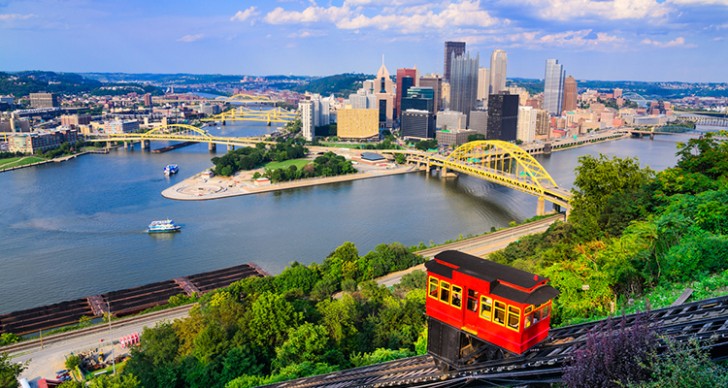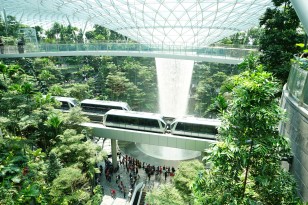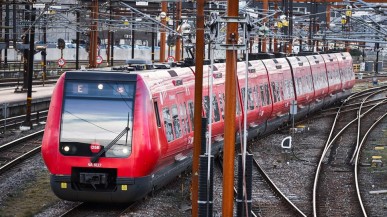Zigurat Global Institute of Technology
Blog / Disruptive Technologies
What Makes an Innovation District Flourish?
Categories

For today’s post we found inspiration in a TEDx Talk by Ramon Gras, a researcher at Harvard and an expert in urban innovation. In what follows, we take a look into some districts that have earned themselves the name and fame of innovators. How did they achieve that?
We know that innovation is related to higher degrees of freedom and security and inversely related to crime and corruption. But what makes a territory more or less innovative? How can we support the innovation in a society? In his presentation, Ramon Gras responded to this question by analyzing 3 innovation districts in the United States. He also relies on his research into 50 innovation districts in the country to draw some conclusions on how innovation district strategies can help us to generate riches.
We shall start with the inequality rates that are greater than ever before. When in the 18th century, the wealthiest nation in the world per capita, that at that moment was the Netherlands, was 4 times more prosperous than the poorest country in the world, in 2019, the wealthiest countries are about 200 times wealthier than the poorest.This shift of wealth has very dramatic impact on the resources available proper supportive urban environments for large part of the world’s population.
Without proper living environments, there’s little chance of people finding the foundation on which to build their lives and futures. Ramon Gras and his fellow researcher Jeremy Burke believe that studying innovation districts will help us to unlock a unique form of economic growth and vitality that delivers positive economic effects to the broader population. They have identified 3 Ingredients or three distinct types of networks that unleash the innovation potential of our cities:
• First are networks of talent, which are composed of individuals with valuable skills and abilities working in concert to solve complex problems.
• Second are the networks of organizational structures, which serve as the foundation for collaboration and enable merit-based promotion of the best ideas.
• Third are networks of urban infrastructure, which support innovation by keeping the district well-connected, desirable, and able to facilitate fruitful human interaction. Cities must manage all three of these networks to create a holistic environment that supports innovation.
To illustrate the role and importance those networks play in the prosperity of a region, Ramon introduces three case studies. 
For the first half of the 20th century, Pittsburgh (Pennsylvania) was the industrial engine of the country producing 60% of the steel, 40% of glass and 40% of the plastic in the USA. It was the steel industry in particular that served as the anchor institution that drove the city’s economy and development decisions. In fact, there are many historians who believe that it was Pittsburgh’s substantial contributions to the American war effort that permitted the USA to win the Wolrd War II against Nazism, Fascism and the Japanese empire.
With the end of World War II that lead to a decrease in demand for steel and the second wave of globalization, many of Pittsburgh’s factories closed and the city lost 40% of its population. By 1983, the unemployment rate of Pittsburgh was up to 17% and it had become one of the most economically depressed and environmentally degraded places in the United States.
However, when we speak about Pittsburgh today, it is home to one of the world’s most important centers of innovation in robotics, advanced manufacturing, and artificial intelligence, and has been proclaimed by multiple publications as one the most livable cities in the country. So, how has the city managed to rise from its ashes like a phoenix? The first step was to identify robotics as a potential new area of specialty that would be complementary to their legacy of an industrial past. The second step was to invest in their research & academia talent network to have a population with collective knowledge in robotics.
The universities’ investments gradually managed to rebuild the local knowledge network and attract new talent in relevant industries, such as AI. By promoting strategic concentration and specialization, Pittsburgh managed to develop its comparative advantage. It took advantage of its prior expertise in manufacturing and heavy industry and created around that preexisting know-how a new specialization area: robotics and AI. Building on previous experience permitted them to diversify, sophisticate and refine their new products and services.

To exemplify the network of organizational structure that serves as the foundation for collaboration and enables the merit-based promotion of the ideas, we turn to MIT, one of the most influential universities in the world. They stand out for their ability to transfer innovative ideas into real tech solutions for the market. This is the result of a well-designed organizational support system.
Out of the 2000 theses that MIT affiliates publish every year, about a third (700) reach the market as a product or service. What might seem like a failure, is actually a rather significant outcome. If were to calculate the economic impact of the companies founded by MIT alumni since the university’s founding, we’ll have the equivalent to the GDP of the 9th largest economy in the world. How does MIT promote innovation? How do they help the ideas make it into real-world products? Because without a doubt, there are no shortcomings in their talent network: the internet, satellite navigation, nuclear and renewable energy solutions, robotics and AI have all developed thanks to the contributions of MIT affiliates.
However, even for them, the network of organization structures in support of innovation is a newer addition to the scene. Today, there are many structures in place to enable technology transfer. At the core of these programs is the 7-phase approach to innovation that brings innovators through the steps of idea creation, data gathering, hypothesis development, prototyping, validation and calibration, the creation of a minimum viable product, and production at scale.
MIT provides tailored support at each stage to maximize the number of successful ventures. It’s that system of meritocratic incentives that empowers the teams with the strongest ideas and permits them to access the resources they need for success that can be define.

The third network we must discuss is that of urban infrastructure - the physical space where we work and live - as it plays a vital role in how we can develop different channels of innovation. To illustrate how urban design and infrastructure can contribute to a well-connected and desirable district that facilitates fruitful human interaction, we turn to Kendall Square in Cambridge (Massachusetts).
In the 1960s, Kendall Square was considered as the possible location for the NASA campus. However, as the campus was finally located in Houston (Texas), Kendall Square remained an underdeveloped desolate lunar landscape with few buildings of any kind in the district. The discontinued development of the neighborhood manifested itself in nonexistent urban infrastructure to house and support any economic activity.
We can see how with multiple world-class universities located nearby, Kendall Square had the potential to host innovation and the city planners just needed to figure out how to make it happen. Over the last 20 years, they have put a major urban development plan in motion. So, what have been the key decisions that have allowed Kendall to tap into the wealth of resources in its surroundings? The first step was to invest in public infrastructure systems to increase accessibility and desirability.
The development of a the Central Artery/Tunnel Project (CA/T), known as the Big Dig, improved the connection between Kendall Square and Boston, providing access to downtown and Logan Airport in less than 15 minutes. Next step was knowing how to leverage the central location, design and density of talent. All that played an important role in Kendall Square becoming home to many MIT and Harvard innovation initiatives.
The third step were strategic zoning plans that promote the optimal level of density for innovation. The neighborhoods of 5 to 7 story buildings are the best for dense enough concentration, but low enough for fruitful interactions. Neither too vertical nor too horizontal cityscape are good for innovation. To create new ideas, even in the digital age, it’s important to have people working and living side-by-side.
Innovation activity in Kendall Square goes beyond concentration of knowledge-intensive jobs, it has also generated a diverse job offering for local community members. It is calculated that approximately for every innovation-focused job the district creates, it generates 4 to 5 additional support jobs leading to 9 times higher density of job opportunities and 20 times more wealth or economic activity per resident. To learn more about the research into innovation districts carried out by Ramon Gras and Jeremy Burke, consult the Atlas of Innovation Districts.




